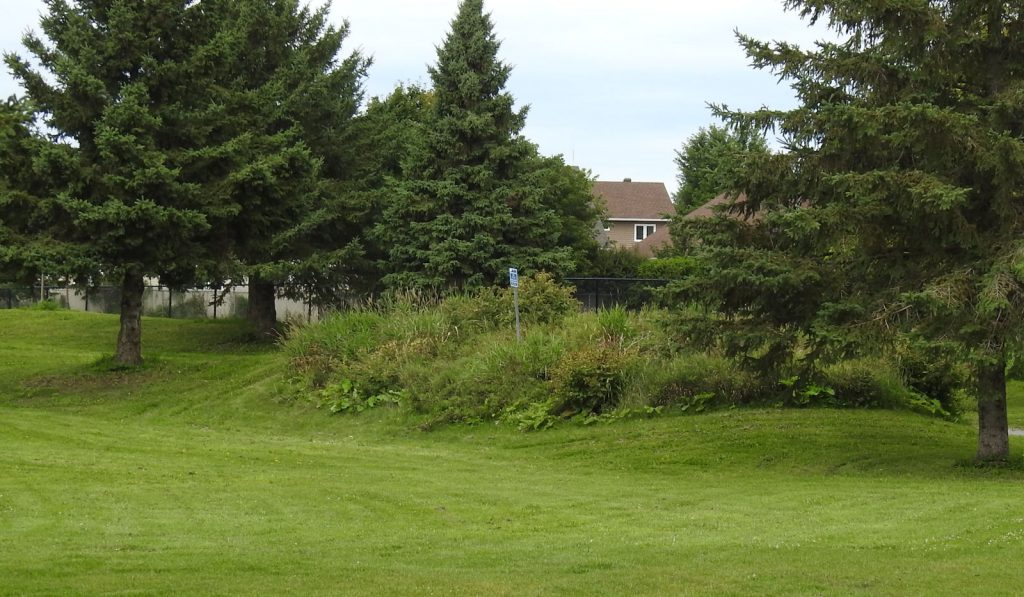by Sandy Garland
We’re halfway through WPP’s series of visits to pollinator patches and gardens, and we continue to meet new people who are passionate about bees, butterflies, and native plants and have knowledge and experience to share. This morning’s event at the Flutter and Buzz Pollinator Patch in Stonecrest Park was no exception.
Six years ago, Clare Grosskleg was worried about Monarchs. She decided to “do something,” which meant applying for a city environment grant, planting a native plant garden, and registering it as a Monarch waystation. It grew from there into what has become a community hub.

Clare’s pollinator patch is located in a well-used city park, near a community centre and a public school.
With help from local members of the Monarch Teacher Network and using their “donut”-shaped model, Clare started small. When the garden was set-up, there were several set-backs, including vandalism and theft. It was evident that missing or destroyed plants had to be replaced and protected. But the community rallied round, donated new plants – only native plants, insisted Clare, and the city contributed a fence to protect the garden. Clare manages the garden under an Adopt-a-Park agreement with the city.
But Clare didn’t stop there. She arranged for the Monarch Teacher Network team to give presentations at annual assemblies in the neighbouring school – Adrian Clarkson Public School. She also offered information and help to teachers using the garden in their curriculum. The school responded enthusiastically and used the garden as teaching space for science, art, conservation, and more. Clare offered her help to other schools, who also started pollinator gardens and Monarch-supporting activities.
At Stonecrest, Clare has obtained permission to plant one of the many berms surrounding the park with wildflowers and she’s hoping to also do that on a smaller berm near the Flutter and Buzz Patch. With that project in mind, she’s allowing the now-mature native plants in her garden to self-seed and spread. That way the berm garden will have a head start with larger plants.

Clare has asked the city for permission to plant wildflowers on this berm, which is currently covered in burdock and other noxious weeds.
Clare has no trouble finding volunteers to help out with these projects. Local people stop by to offer help, she puts school classes to work, and high school students are always looking for ways to accumulate their volunteer hours. In spring she sends out notices to school and community networks and soon has all the help she needs. In fact, Clare has found time to take on the CEO position for the National Children’s Botanical Garden of Canada!
Participants at the event introduced themselves and we learned about other conservation initiatives, such as the Bridge-to-Bridge tree planting project along Bronson Avenue between the canal and the river. And how to manage a worm composter!
A representative of the Fletcher Wildlife Garden was present and mentioned its annual native plant sale as well as the good work that the Ottawa Wildflower Seed Library is doing.
Although it’s been a bad season for butterflies, both Clare and Emily are raising caterpillars in safe conditions and will release the adult butterflies as soon as they emerge.
All in all, this was a very enjoyable and inspiring get together. Always a pleasure to chat with people who are helping pollinators.


I am sorry to have missed the event. I’ll plan to make my way there before the season is out. Congratulations to Clare for the wonderful results she is getting!